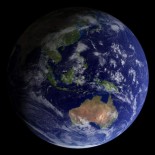Walls turn into fact of life in West Bank city of Hebron
by Florence Biedermann Tue Sep 5, 12:20 PM ET | Yahoo News
Walls within walls; racist Israeli settlers invoke an murder act in 1929 to justify their land theft and forget their own human rights abuses (more recent Goldstein massacre) – but its easier to hold up a (distorted) lens than a mirror, isn’t it?
AFP/File Photo: An Israeli construction crew assembles a concrete wall in the West Bank town of Hebron
HEBRON, West Bank (AFP) – A Palestinian child in Hebron has drawn her West Bank home town. Apart from rows of houses and olive trees, the picture shows an area circled by barbed wire, and is complete with checkpoint and watchtower.
The large drawing now hangs in a Medecins Sans Frontieres (MSF) consulting room, where the international non-governmental organisation counsels Palestinians on “the violence of the intifada and the (Israeli) occupation” of the area.
Since the month-long war in Lebanon, more walls have sprung up in the old city of Hebron in addition to the massive concrete barrier which Israel is building to seal off the West Bank for what it calls security reasons.
But they still fail to prevent violence. Routine harassment of Palestinians by Israeli settlers during a period of relative calm in the intifada remains a daily fact of life.
Some 500 diehard Israeli settlers live in the centre of Hebron along a road cutting through the old souk. Since the Lebanon war, the army has blocked all roads leading to the settlers’ quarter with walls, barbed wire and barricades.
“It takes children 45 minutes to get to school instead of five, because they have to go round the zone. And settlers throw stones at them from their balconies or lie in wait until they come out of school to bully them,” Annabelle Williams of MSF told AFP.
Other walls snake across the Hebron district.
“On the (25-kilometre, 16-mile) road between Carmel and Kirbat Zanuta, the Israelis put up a 60-centimetre-high wall — just high enough to prevent the Bedouin from getting their animals to the nearby market to sell them, or to get to the nearest hospital by car,” Williams said.
The only gap in this mini-wall has been closed since the Lebanon war.
On the Palestinian side of the almost deserted Hebron souk, almost all shops have been closed “for security reasons”.
Where the stone-arched alleyways lie next to an Israeli settlement, they are topped by a latticework of metal full of debris and stones, many thrown by settlers, local residents said.
Barbed wire and obstacles surround the Tomb of the Patriarchs — a site holy to both Jews and Muslims where Jewish settler Baruch Goldstein massacred 29 Muslims in 1994.
The faithful wanting access to the ancient mosque on the site have to negotiate three electronic security gates before they are allowed in.
“Life is difficult — there are too many barriers. The Israeli soldiers stop us every day for ID checks. They wounded my brother a year ago,” said one youth who declined to give even his first name.
“I live near Kiryat Arba,” the large settlement next to Hebron, his friend said. “The settlers throw stones at us. They hate us. They are settlers, and we are the enemy.”
Elin Mette, spokeswoman for the Temporary International Presence in Hebron (TIPH), a group of international observers created after the Goldstein massacre, confirms this.
“Every day we see violent incidents, a large number of them because of harassment by the settlers. The Israeli soldiers do not react,” she said.
Journalists are not welcomed by the settlers. Nobody is available to comment, because their spokesman is “on holiday”. The hostility is palpable.
Their collection of modern buildings, financed largely by donations from Jewish organisations in the United States, is in the middle of an otherwise largely deserted and run-down area — the other half of the old souk.
The settlement is surrounded by barbed wire and soldiers.
A large poster in both Hebrew and English at its entrance proclaims the settlers’ presence: “This land was stolen by Arabs following the murder of 67 Hebron Jews in 1929. We demand justice! Return our property to us!”


Recent Comments